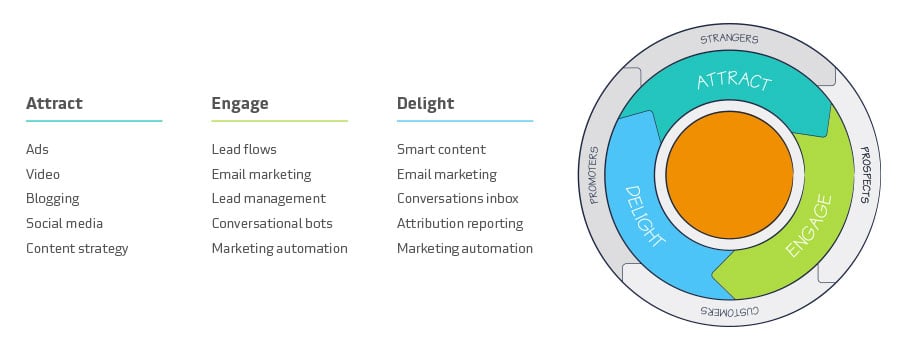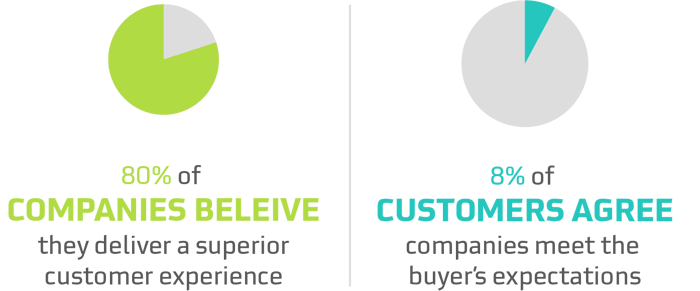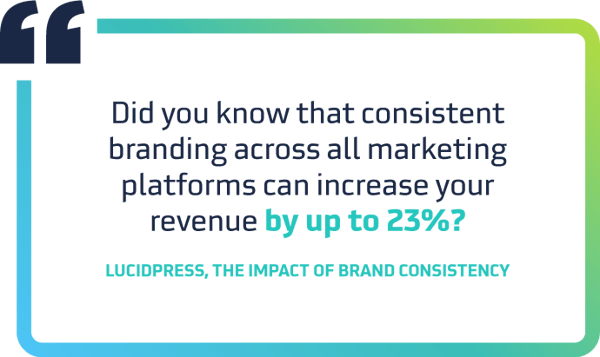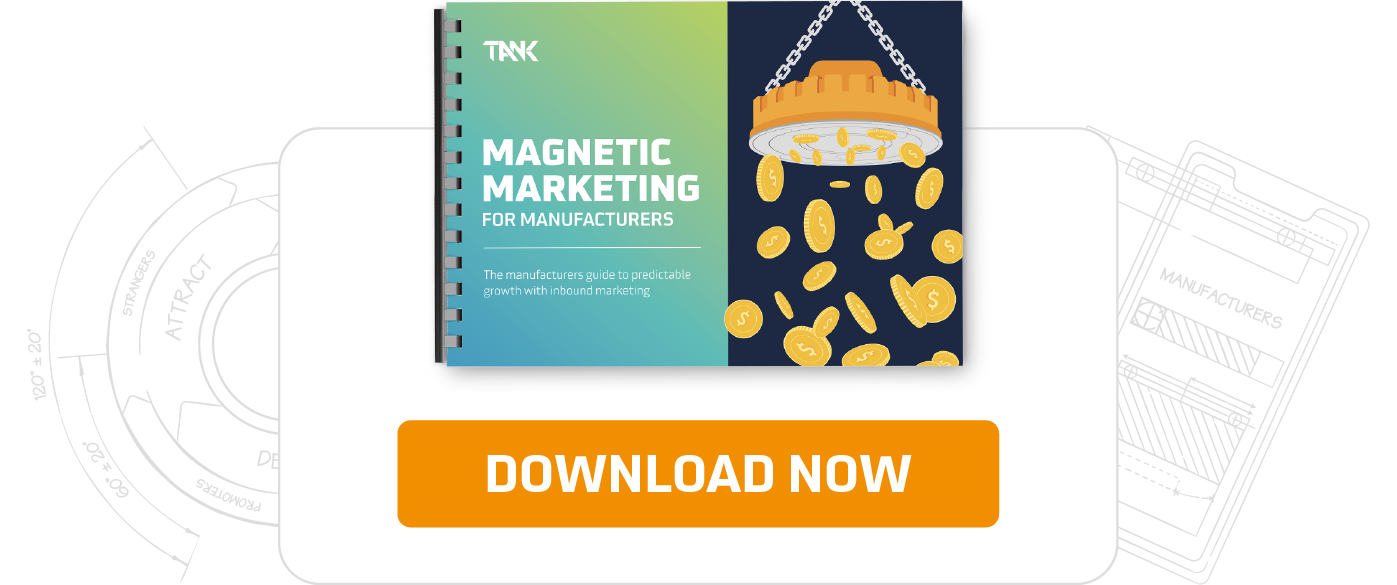We’ve all heard the term customer experience. In fact, it’s become a marketing buzzword. Why?
Because it’s been proven that a positive customer experience closes more sales, promotes loyalty, helps retain customers, and encourages brand advocacy. In today’s market, customers have the power, not the sellers.
To grow your business, you’ve got to think about your customer first and their experience. But how? Where do you start?
To lay the groundwork, let’s deconstruct the concept of customer experience.
Customer experience is the perfect pairing and intertwining of customer service and customer satisfaction. It's when a company thinks about the customers before itself. Customer experience means you’re razor focused on your customers’ needs, desires, and preferences, not those of your company. It means making sure you understand who your customers are, how they process information, and what their shopping patterns and habits are. Providing great customer experiences at every stage of the buyer’s journey matters.
 For years, companies have structured their business strategies around a marketing and sales funnel, but a funnel doesn’t capture the momentum or the customer-centrality that a flywheel does. With the flywheel, the momentum from your happy customers drives referrals and repeat sales. Basically, your business keeps spinning and growing — with the customer at the center.
For years, companies have structured their business strategies around a marketing and sales funnel, but a funnel doesn’t capture the momentum or the customer-centrality that a flywheel does. With the flywheel, the momentum from your happy customers drives referrals and repeat sales. Basically, your business keeps spinning and growing — with the customer at the center.

80% of companies believe they deliver a superior customer experience, but only 8% of customers agree. Crazy, right? Clearly, there’s a misalignment of expectations.
How do you change your business-centered focus to a customer-centered focus so that your approach is fundamentally different and better?
To get moving in the right direction, let’s look at some actions you can take to begin shifting your focus from yourself to your customer, meeting their needs and expectations. You can:
- Adjust to Your Customers' Expectations
- Understand the Buyer's Journey & Touchpoint Opportunities
- Create Branded Customer Experience Touchpoints
- Track Your Growth & Evaluate
Adjust to Your Customers’ Expectations
While your company may sell what a customer needs, it’s not all about the product or service. Well, not entirely, anyway. First and foremost, it’s about meeting a need, but then it’s about making a connection. People want solutions, but they also want to feel connected to the company or brand before making a purchase. It’s a relationship — and relationships take work.
Think about creating valuable touchpoints like emails, white papers, and blog posts — ones that answer the questions and address the concerns that your customers’ have. Look for ways to make processes simpler and more convenient like shorter online forms, easy-to-digest website pages, and reaching your customers on the platforms they’re already using. Uncover the things that are hindering or tripping up your customers along the way. And speak their language. No business jargon needed — just clear messaging, helpful information, and logical steps.
Every interaction and each touchpoint provides either a positive or a negative experience. Think about that as you work to build relationships with potential customers. It’s about them, not you.
Understand the Customer Journey & Touchpoint Opportunities
The customer journey is the sum of experiences that consumers have with your company or brand. It’s how you communicate with them and how they respond. It’s knowing where and when to engage.
For instance:
- Where are your customers? What channels do they use, and how do they interact with them? Focus your time and energy on where your customers are spending time and where they're looking for information. Reach out to them there and find creative (not creepy) ways to connect.
- Do your customers value the self-serve model that’s become so integrated in current purchasing habits? These days people are doing so much online legwork before making a purchase. They want to feel empowered to make educated decisions, and they want to find solutions for themselves. If this describes your primary customer personas, it's really important that you don't hinder that, but instead, capitalize on it.
- Provide multiple ways for your audience to find the information they want. Maybe the gateway is an email, a downloadable white paper, or a social media ad. Think about the different paths that can lead to the same target audience.
Content Marketing Institute says that it takes seven to twelve touchpoints to deliver a qualified lead to sales. That being the case, each touchpoint along the customer journey needs to be strategic and intentional.
Interested in learning more about creating a great customer experience?
Listen to this podcast episode by Manufacturing Growth.
Create Branded Customer Experience Touchpoints
While your product or service may technically accomplish the same as another company, it’s your brand that will set you apart from the competition. What is it that makes your brand unique? What are you providing that differentiates you from others in the marketplace?

Your brand is more than your signature colors, fonts, and logo. It also encompasses your values, your mission, and your why. Some key brand-related standouts could be:
- Credibility — always being above the line
- User First — always putting the user’s experience first
- Personalization — always making it personal
And these are just a few. There are many more. Identify yours and embrace them.
Credibility
The way to build credibility over time is to have top-tier products, industry-leading customer service, and consistent branding. While a defective product may disappoint your customer, how you deal with the situation will make all the difference. From the moment you "find" your customer, stay true to your brand and be prepared to make painstakingly hard choices to keep your credibility intact and your customer number one.
User First
Make sure the customer journey is customer-centric, straightforward, and optimized so that it’s focused on providing the consumer with the information they want in the easiest way possible.
A user-first buying experience can include responsive and mobile-friendly applications, great UX and UI design, and helpful information that’s easy to find.
Personalization
This is about creating a natural experience. One way to do that is to add personalization tokens when it makes sense. That may mean using it sparingly in a subject line or often in the email greeting — it all depends on your audience and how you think they’ll respond to it. Another way to create a personal experience is to incorporate smart content.
Here’s an example of effective smart content. If someone visits your website, downloads an awareness stage white paper, then leaves, the next time they visit your site, rather than re-showing them that same white paper, the content will dynamically update to show a consideration stage checklist instead. Tailoring their website experience to their needs is helpful and offers a natural next step.(Curious about the three stages of the buyer’s journey? Read this article.)
Track Your Growth & Evaluate
All of these actions will help put you on the right path — the one that starts and ends with your customer. However, as you work at it, you’ll discover that some things work better than others. Some efforts need tweaking. And others were surprisingly effective. Spend time reviewing and evaluating the good and the bad — and determine a way to track and evaluate your efforts.
Keep working toward delivering positive customer experiences. It will promote loyalty, help retain customers, encourage brand advocacy — and, yes, ultimately increase sales.
Want Support from Customer Experience Pros?
You want to grow your business, and you know that you can do that by taking actions that put your customers first — like meeting them where they're at and offering clear-cut solutions at various touchpoints along the buyer’s journey. You win when you understand who your customers are and how you can solve their problems.
When preparing to shift gears or try something new, most of us feel excited but a little anxious not knowing exactly where or how to start. If you could use some help creating and implementing a customer experience plan, we can help get you there.
Our team has been in the marketing and sales space for over ten years. In that time, we’ve seen a lot of change. Some trends lost traction while others took off. Creating a great customer experience is not a trend; it’s here to stay. That’s one reason why we love inbound marketing — it focuses on creating clear messaging and helpful content to solve customers’ problems and pain points. Download our free guide to find out if inbound marketing is a good fit for you.
Magnetic Marketing for Manufacturers
The ultimate guide to predictable growth with inbound marketing
Subscribe to Our Blog
Stay up to date with the latest marketing, sales, and service tips.




